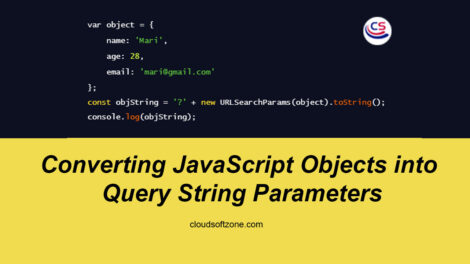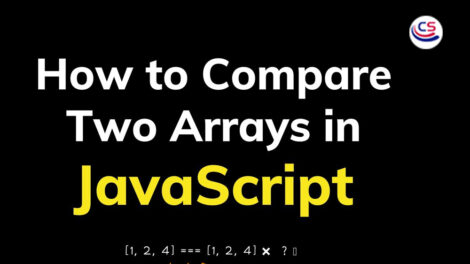Introduction
Are you tired of dealing with nested arrays in JavaScript? Array flattening is the solution you’ve been looking for. In this comprehensive guide, we’ll dive into the art of array flattening in JavaScript, covering a range of techniques, best practices, and real-world examples. By the end, you’ll be equipped to streamline your code and tackle even the most complex data structures.
Checkout more articles on JavaScript
- Understanding the Bubble Sort Algorithm in JavaScript
- Converting JavaScript Objects into Query String Parameters
- How to Compare Arrays in JavaScript
- JavaScript Interview Questions
Section 1: What is Array Flattening?
Array flattening is the process of converting a nested array structure into a flat, one-dimensional array. In JavaScript, this often involves dealing with arrays within arrays. Let’s break down the concept and understand why it’s essential.
In a nutshell, array flattening helps simplify data manipulation by providing a more manageable structure. When working with data, especially in scenarios involving APIs or complex user-generated content, you’ll frequently encounter nested arrays. To process this data efficiently, you need to know how to flatten these structures.
Section 2: Traditional Looping Approach
One way to flatten an array is through the traditional looping approach. This method involves using nested loops to iterate through the elements of the array and create a new, flat array. While it’s straightforward and easy to implement, it may not be the most efficient or elegant solution.
Here’s an example of the traditional looping approach:
// Sample nested array
const nestedArray = [1, [2, 3], [4, [5, 6]]];
// Flatten the array using traditional loops
function flattenArray(arr) {
const result = [];
for (let i = 0; i < arr.length; i++) {
if (Array.isArray(arr[i])) {
result.push(...flattenArray(arr[i]));
} else {
result.push(arr[i]);
}
}
return result;
}
const flatArray = flattenArray(nestedArray);
console.log(flatArray); // [1, 2, 3, 4, 5, 6]jsWhile this approach works, it can become unwieldy for deeply nested arrays. In the following sections, we’ll explore more efficient and modern methods for array flattening.
Section 3: Using Recursion
Recursion is a powerful technique for array flattening in JavaScript. It allows you to create a function that calls itself to navigate through nested arrays. This method is elegant and flexible, making it suitable for various scenarios.
Here’s an example of flattening an array using recursion:
// Sample nested array
const nestedArray = [1, [2, 3], [4, [5, 6]]];
// Flatten the array using recursion
function flattenArray(arr) {
return arr.reduce((acc, val) => {
return Array.isArray(val) ? acc.concat(flattenArray(val)) : acc.concat(val);
}, []);
}
const flatArray = flattenArray(nestedArray);
console.log(flatArray); // [1, 2, 3, 4, 5, 6]The recursive approach is elegant and can handle deeply nested arrays effectively. However, you should be cautious when dealing with extremely large arrays as it can lead to a stack overflow error.
Section 4: ES6 Methods for Array Flattening
ES6 introduced several helpful methods for array flattening, simplifying the process and making the code more concise and readable. These methods include Array.flat(), Array.flatMap(), and the use of reduce().
Let’s explore these modern methods for array flattening:
Using Array.flat():
The Array.flat() method returns a new array with all the elements of the original array concatenated into a flat structure. It takes an optional depth parameter, allowing you to specify how deep the flattening should go.
Here’s how you can use Array.flat():
// Sample nested array const nestedArray = [1, [2, 3], [4, [5, 6]]]; // Flatten the array using Array.flat() const flatArray = nestedArray.flat(2); console.log(flatArray); // [1, 2, 3, 4, 5, 6]
This method simplifies array flattening, especially when you know the depth of nesting.
Using Array.flatMap():
The Array.flatMap() method is ideal when you want to both map and flatten an array in one step. It applies a function to each element in the array, then flattens the result into a new array.
Here’s how you can use Array.flatMap():
// Sample nested array const nestedArray = [1, [2, 3], [4, [5, 6]]]; // Flatten and double each element using Array.flatMap() const flatArray = nestedArray.flatMap((item) => [item, item * 2]); console.log(flatArray); // [1, 2, 2, 4, 3, 6, 4, 8, 5, 10, 6, 12]
Array.flatMap() is a versatile method that simplifies both mapping and flattening operations.
Using reduce():
You can also leverage the reduce() method to flatten arrays by applying a flattening function iteratively. This approach offers fine-grained control over the flattening process.
Here’s how you can use reduce() for array flattening:
// Sample nested array const nestedArray = [1, [2, 3], [4, [5, 6]]]; // Flatten the array using reduce() const flatArray = nestedArray.reduce((acc, val) => acc.concat(val), []); console.log(flatArray); // [1, 2, 3, 4, 5, 6]
reduce() gives you control over the flattening process, making it suitable for customized scenarios.
Section 5: Combining Methods for Advanced Flattening
In more complex scenarios, you might need to combine multiple methods for advanced array flattening. By using a combination of methods like flatMap() and reduce(), you can handle even the most intricate nested arrays.
Here’s an example of combining methods for advanced flattening:
// Sample deeply nested array
const deeplyNestedArray = [1, [2, [3, [4, 5], 6], 7], 8];
// Flatten the array using a combination of methods
const flatArray = deeplyNestedArray.flatMap((item) => {
if (Array.isArray(item)) {
return item.reduce((acc, val) => acc.concat(val), []);
}
return item;
});
console.log(flatArray); // [1, 2, 3, 4, 5, 6, 7, 8]This approach allows you to tailor your flattening method to the specific structure of the array you’re working with.
Section 7: Tips and Best Practices
When working with array flattening in JavaScript, it’s essential to follow some best practices to ensure clean and efficient code. Here are some tips to keep in mind:
Tip 1: Error Handling
Error handling is crucial, especially when dealing with potentially unknown data structures. Make sure to implement proper error checks to handle unexpected situations gracefully.
Tip 2: Code Readability
Write code that’s easy to read and understand. Meaningful variable and function names can go a long way in making your code more maintainable.
Tip 3: Testing
Thoroughly test your array flattening code, especially if it’s used in critical parts of your application. Use sample data with different levels of nesting to verify its correctness.
Tip 4: Performance Considerations
Consider the performance implications of the method you choose for array flattening. For very large datasets, you might need to optimize your code for speed.
Section 8: Conclusion
In this guide, we’ve explored various JavaScript array flattening techniques, from traditional looping and recursion to modern ES6 methods like Array.flat(), Array.flatMap(), and reduce(). You’ve learned how to combine these methods for advanced flattening and seen practical use cases for array flattening in real-world scenarios.
Now armed with the knowledge and best practices, you can confidently tackle nested arrays and improve your code’s efficiency and readability.
Conclusion:
Array flattening in JavaScript is a valuable skill for developers working with complex data structures. Whether you’re processing JSON data from APIs or handling user-generated content in web applications, knowing how to flatten arrays can simplify your code and enhance your development capabilities. By following the techniques and best practices outlined in this guide, you’re well-equipped to handle array flattening challenges effectively and write cleaner, more efficient code.
Additional Resources:
Explore these external resources to deepen your knowledge of JavaScript array flattening:
- MDN Web Docs – Array.prototype.flat()
- Detailed documentation on the
Array.prototype.flat()method with examples and usage guidelines.
- Detailed documentation on the
- MDN Web Docs – Array.prototype.flatMap()
- Comprehensive information on the
Array.prototype.flatMap()method, its benefits, and practical examples.
- Comprehensive information on the
- MDN Web Docs – Array.prototype.reduce()
- In-depth documentation on the
Array.prototype.reduce()method, including how it can be used for array flattening.
- In-depth documentation on the
- Understanding Recursion in JavaScript
- An article that delves into the concept of recursion in JavaScript and how it can be applied to array flattening.
These resources provide valuable insights and additional examples to further enhance your understanding of array flattening techniques in JavaScript. Happy learning!













Add Comment